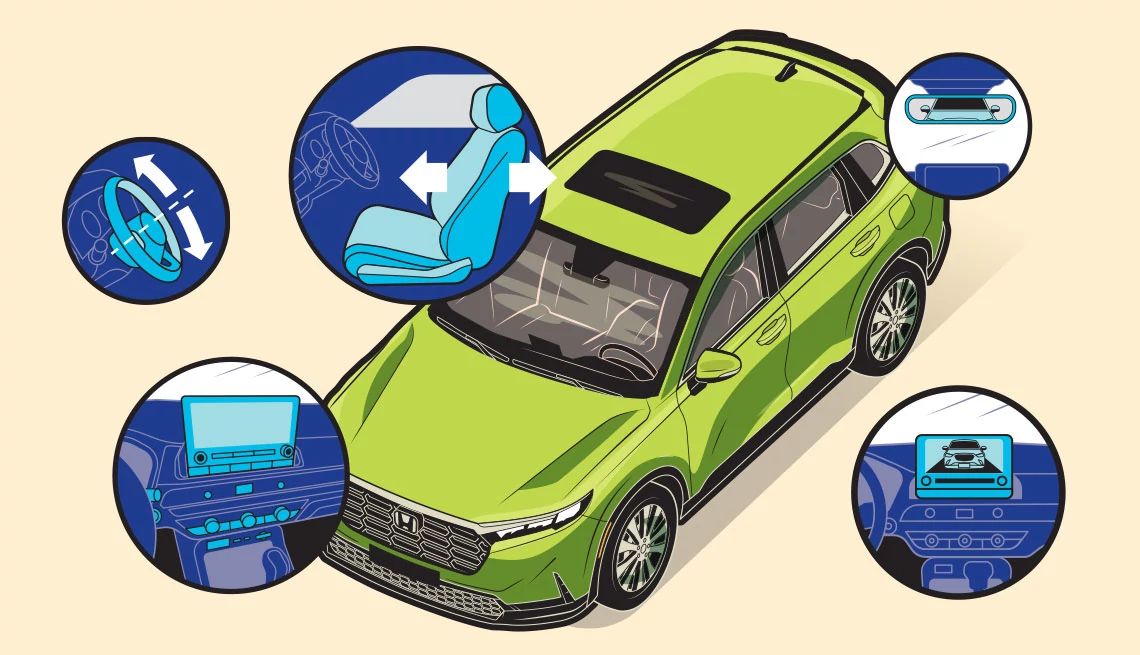AARP Hearing Center


Drivers 55 and older make up more than a third of traffic on U.S. roads, a percentage that is only expected to increase. But those sleek and shiny vehicles you see in glitzy car commercials may not be designed with older bodies in mind. And that can be a problem.
“Selecting a car that best fits you and adjusting it to your body will help increase visibility, reduce distraction and, in the event of a crash, you’ll be positioned for the safety features in your car to work to protect you,” says Josh Dunning, an AARP vice president and national director of its Driver Safety program. Here are some factors to consider when shopping for a vehicle.
Adjustability
Manually adjusting seats by pulling levers and using the force of your body can be cumbersome, especially for those with arthritis or other conditions.
The solution: Jennifer Stockburger, director of operations at Consumer Reports’ Auto Test Center, encourages older drivers to look for a vehicle with power-adjusted seats that you move by pushing buttons.
More features: About 40 percent of Honda cars with power seats include a memory feature that allows each regular driver to save preferred seat and mirror positions and return to those settings by pressing a button, says Jimmy Jenkins, manager for Honda product planning. Many GM models also have memory settings.
Visibility
To make cars more fuel-efficient, automakers strive for aerodynamics. That means vehicles with sloping front ends and small windows, which can be a problem for drivers with limited range of neck motion. “Visibility becomes critical,” Stockburger says.
The solution: Look for older-style “boxy” designs, with more glass for easier viewing.
Examples: Among minivans are the Chrysler Pacifica and Honda Odyssey. SUV selections include the Kia Soul, Toyota Highlander, Subaru Forester, Toyota RAV4 and Nissan Rogue. If you want a sedan, the Toyota Camry and Honda Accord have limited blind spots.
More features: Backup cameras are required by law, but generally come on only when in reverse. Some models let you turn on the camera while driving forward, as a sort of additional rearview mirror.




































































You Might Also Like
How to Keep Your Car Running
What to do before you buy and ways to extend the life of your car, read our tips to keep your vehicle in tip-top shape
Stay Safe in Your Car
Driver monitoring systems, traffic sign recognition and more, here’s what to look for in your vehicle
Guide to Cleaning Your Car
We have tips on how to best clean your vehicle’s interior, exterior, storage and under-hood systems
AARP Members Edition
Your daily source for candid takes on life, comprehensive guides to living well, tips for saving money, inspiring travel, and more – only for AARP membersRecommended for You